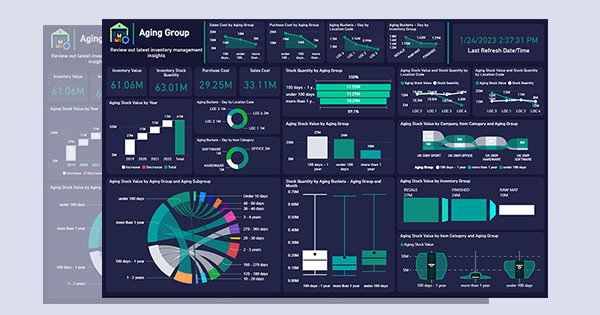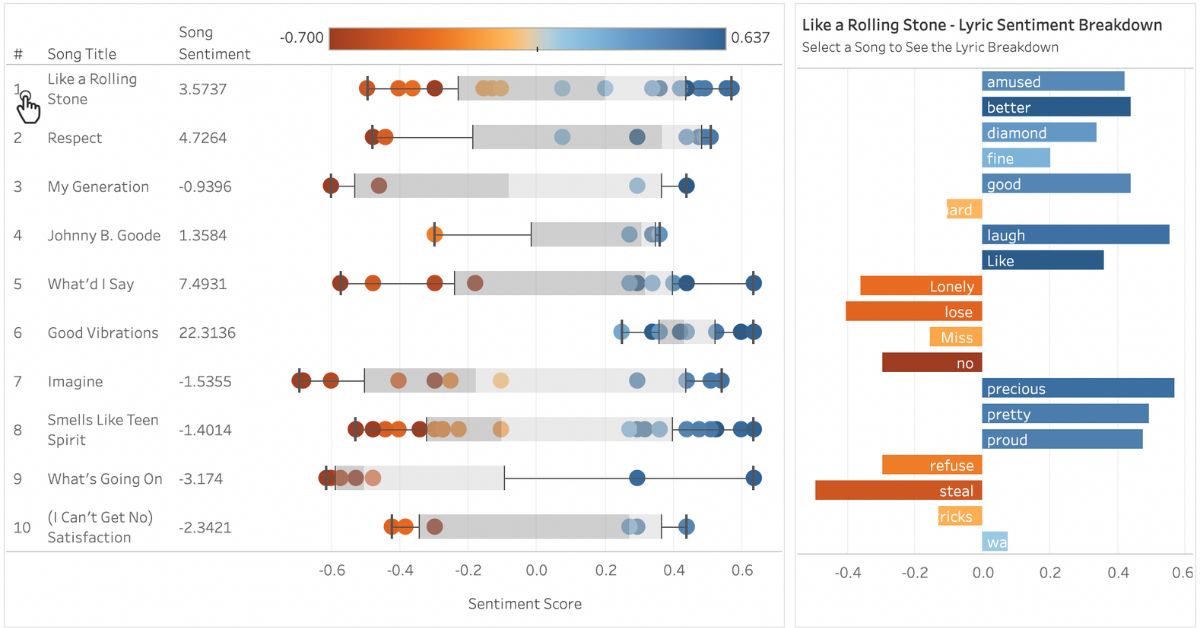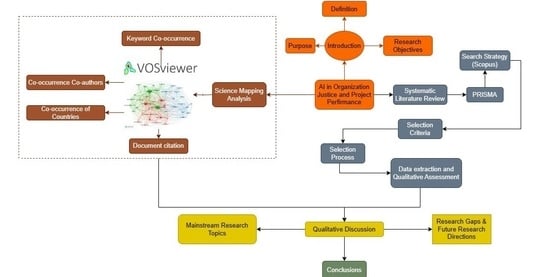Transforming Business Units: Strategic AI Implementation for Sales, Marketing, and Operations Teams
The Evolution of Department-Specific AI Solutions
I've been witnessing a remarkable shift in how businesses are implementing AI technology. Rather than adopting one-size-fits-all solutions, forward-thinking organizations are now embracing specialized AI applications designed to address the unique challenges faced by different departments. This strategic approach is transforming how teams operate, collaborate, and deliver value.
The Evolution of Department-Specific AI Solutions
I've observed a significant transformation in how AI is being deployed across organizations. We're moving away from generic AI tools toward specialized applications designed to address the unique challenges faced by different business units. This shift represents a more mature understanding of how AI can drive value when tailored to specific departmental needs.
Current adoption rates show varying levels of AI integration across core business functions:
In my experience working with various organizations, I've noticed that siloed AI implementation often leads to fragmented data ecosystems and missed opportunities for cross-functional insights. On the other hand, companies that maintain a cohesive AI strategy while addressing department-specific pain points tend to achieve significantly better results.
Siloed vs. Integrated AI Implementation
flowchart TD
A[Enterprise AI Strategy] --> B[Siloed Approach]
A --> C[Integrated Approach]
B --> D[Sales AI]
B --> E[Marketing AI]
B --> F[Operations AI]
C --> G[Unified Data Layer]
G --> H[Sales AI Module]
G --> I[Marketing AI Module]
G --> J[Operations AI Module]
D -.-> K[Fragmented Insights]
E -.-> K
F -.-> K
H <--> I
I <--> J
J <--> H
H & I & J --> L[Holistic Business Intelligence]
style A fill:#FF8000,stroke:#E67300,color:white
style G fill:#FF8000,stroke:#E67300,color:white
style L fill:#FF8000,stroke:#E67300,color:white
style K fill:#f88,stroke:#f00
The key challenge we face today is maintaining unified data ecosystems while deploying specialized AI tools that address specific departmental needs. This balance is critical for ensuring that insights flow freely across the organization while still providing tailored functionality to each team.
Revolutionizing Sales Teams Through AI Integration
I've seen firsthand how AI is transforming sales operations from reactive to proactive functions. The most impactful applications I've encountered include intelligent lead scoring systems that help teams focus on high-value prospects, predictive analytics for more accurate forecasting, and conversation intelligence tools that provide real-time coaching during customer interactions.
AI Impact on Sales Performance
In one case study I worked on, implementing AI across the sales function reduced sales cycles by 35% while simultaneously improving win rates. The key was creating personalized buyer journeys with behavioral analysis and next-best-action recommendations that guided prospects through the decision process more efficiently.
Sales Content Enhancement with AI
One of the most powerful applications I've seen is using PageOn.ai's Vibe Creation feature to transform technical product specifications into compelling visual sales materials. This capability bridges the gap between complex product details and the narrative that resonates with buyers.
How PageOn.ai Enhances Sales Materials
- Transforms technical specifications into visually engaging sales collateral
- Creates dynamic competitive battlecards that update based on market intelligence
- Uses Deep Search to incorporate relevant case studies into proposals
- Generates customized ROI calculators with visual outputs for different buyer personas

I've also found AI-driven competitive battlecards to be game-changing for sales teams. These dynamic resources update automatically based on market intelligence, ensuring that sales representatives always have the most current information when positioning against competitors.
AI Marketing Assistants: Amplifying Creative and Analytical Capabilities
The marketing landscape has undergone a profound transformation with the advent of AI marketing assistants. I've watched these tools evolve from basic automation platforms to sophisticated strategic partners that enhance both creative and analytical marketing functions.
Evolution of AI in Marketing
flowchart LR
A[Basic Automation] --> B[Rules-Based Systems]
B --> C[Machine Learning]
C --> D[Predictive Analytics]
D --> E[Creative Assistance]
E --> F[Strategic Partnership]
style A fill:#f9f9f9,stroke:#ccc
style B fill:#f9f9f9,stroke:#ccc
style C fill:#FFF4E6,stroke:#FFB366
style D fill:#FFE0B3,stroke:#FF8000
style E fill:#FF8000,stroke:#E67300,color:white
style F fill:#FF6000,stroke:#CC4D00,color:white
In my experience implementing AI marketing solutions, content personalization at scale has delivered the most immediate ROI. Modern systems can now segment audiences with remarkable precision, generate dynamic content tailored to each segment, and continuously optimize through multivariate testing.
Marketing Efficiency Gains from AI Implementation
AI-Generated Marketing Content: Balancing Creativity and Brand Consistency
One of the biggest challenges I've encountered with AI-generated marketing content is maintaining a consistent brand voice across multiple channels. Successful implementations require establishing AI guardrails that ensure creative output remains on-brand while still allowing for innovation.

I've found PageOn.ai's AI Blocks feature particularly valuable for creating cohesive visual narratives across campaigns. This tool allows marketing teams to maintain visual consistency while adapting content for different platforms and audience segments.
Key Metrics for AI-Enhanced Marketing
Content Efficiency
Measure creation time, output volume, and content reuse rates
Personalization Depth
Track segments reached, engagement across segments, and conversion deltas
Brand Consistency
Monitor tone adherence, visual alignment, and messaging coherence
Operational Excellence Through Intelligent Automation
In my work with operations teams, I've seen how AI can transform efficiency and resilience. Process mining and optimization tools have been particularly impactful, automatically identifying bottlenecks and suggesting improvement opportunities that human analysts might miss.
AI-Powered Operations Optimization
flowchart TD
A[Operational Data Collection] --> B{Process Mining}
B --> C[Bottleneck Identification]
B --> D[Efficiency Pattern Recognition]
B --> E[Exception Analysis]
C & D & E --> F[AI Recommendation Engine]
F --> G[Process Redesign]
F --> H[Automation Opportunities]
F --> I[Resource Reallocation]
G & H & I --> J[Implementation]
J --> K[Continuous Monitoring]
K --> A
style B fill:#FF8000,stroke:#E67300,color:white
style F fill:#FF8000,stroke:#E67300,color:white
style K fill:#FF8000,stroke:#E67300,color:white
Supply chain resilience has become a critical focus area where I've seen AI make tremendous impact. Advanced demand forecasting algorithms can now account for hundreds of variables—from weather patterns to social media trends—resulting in inventory optimization that reduces costs while improving product availability.

Business Intelligence AI: From Data to Actionable Insights
One of the most transformative applications I've implemented is business intelligence AI that breaks down traditional data silos. These platforms can integrate information from disparate sources—finance, supply chain, customer service, and sales—to create a unified view of operations.
Impact of AI on Operational Metrics
I've worked with teams using PageOn.ai to create visual operational dashboards that translate complex metrics into clear decision points. This approach democratizes data access across organizational levels, allowing everyone from executives to frontline managers to make informed decisions based on the same underlying information.
PageOn.ai for Operational Visualization
In my experience, PageOn.ai's visualization capabilities excel at translating complex operational data into intuitive visual formats. Teams can create custom dashboards that highlight critical metrics, track performance against targets, and identify anomalies before they impact business performance.
AI-Powered Customer Service: The Intersection of Sales, Marketing and Operations
I've found that AI-powered customer service represents the perfect intersection of sales, marketing, and operations functions. Modern AI systems can intelligently route and prioritize customer inquiries across departments, ensuring that each interaction is handled by the most appropriate team member.
Cross-Departmental Customer Service Integration
flowchart TD
A[Customer Inquiry] --> B{AI Analysis Engine}
B --> C[Intent Classification]
B --> D[Sentiment Analysis]
B --> E[Priority Assessment]
C --> F{Routing Decision}
F --> G[Sales Team]
F --> H[Marketing Team]
F --> I[Operations Team]
F --> J[Support Team]
G --> K[CRM Integration]
H --> L[Campaign Insights]
I --> M[Process Feedback]
J --> N[Knowledge Base]
K & L & M & N --> O[Unified Customer View]
style B fill:#FF8000,stroke:#E67300,color:white
style F fill:#FF8000,stroke:#E67300,color:white
style O fill:#FF8000,stroke:#E67300,color:white
Sentiment analysis has been one of the most valuable AI applications I've implemented in customer service contexts. These tools can detect subtle emotional cues in customer communications, allowing for proactive intervention when satisfaction begins to decline.

I've seen PageOn.ai's Deep Search functionality transform knowledge management for customer service teams. This powerful tool allows agents to instantly retrieve relevant product information, policies, and solutions, ensuring consistent information across all customer touchpoints.
AI Impact on Customer Service KPIs
Implementation Framework for Cross-Departmental AI Integration
Based on my experience implementing AI solutions across multiple departments, I've developed a framework that helps organizations assess readiness and establish relevant KPIs for each function. This approach ensures that AI investments align with specific departmental goals while supporting broader organizational objectives.
Cross-Departmental AI Implementation Framework
flowchart TD
A[Assessment Phase] --> A1[Data Readiness]
A --> A2[Process Maturity]
A --> A3[Team Capabilities]
A1 & A2 & A3 --> B[Strategy Development]
B --> B1[Department-Specific KPIs]
B --> B2[Cross-Functional Goals]
B --> B3[Technology Selection]
B1 & B2 & B3 --> C[Implementation]
C --> C1[Pilot Projects]
C --> C2[Feedback Loops]
C --> C3[Scaling Framework]
C1 & C2 & C3 --> D[Governance Structure]
D --> D1[AI Center of Excellence]
D --> D2[Data Governance]
D --> D3[Ethical Guidelines]
D1 & D2 & D3 --> E[Continuous Evolution]
style A fill:#FF8000,stroke:#E67300,color:white
style B fill:#FF8000,stroke:#E67300,color:white
style C fill:#FF8000,stroke:#E67300,color:white
style D fill:#FF8000,stroke:#E67300,color:white
style E fill:#FF8000,stroke:#E67300,color:white
I've found that building cross-functional AI governance and centers of excellence is essential for successful implementation. These structures help coordinate efforts across departments, share best practices, and ensure consistent application of ethical guidelines and data governance principles.
Technology Stack Considerations
| Department | Core AI Needs | Integration Requirements | Data Considerations |
|---|---|---|---|
| Sales | Predictive analytics, conversation intelligence, personalization | CRM, marketing automation, content management | Customer interactions, historical deals, market data |
| Marketing | Content generation, audience segmentation, campaign optimization | CRM, analytics platforms, social media management | Customer profiles, engagement metrics, competitive intelligence |
| Operations | Process mining, forecasting, anomaly detection | ERP, supply chain management, IoT platforms | Operational metrics, supply chain data, quality control measurements |
Change management is perhaps the most critical aspect of successful AI implementation that I've encountered. Different departments often have distinct team cultures and varying levels of technical sophistication, requiring tailored approaches to training, communication, and adoption incentives.

I've leveraged PageOn.ai's Agentic capabilities to create customized visual implementation roadmaps for cross-departmental AI initiatives. These visualizations help stakeholders understand dependencies between different workstreams and track progress against key milestones.
Future Trends in Department-Specific AI Applications
Based on my observations of the market, I anticipate a significant convergence of departmental AI tools toward unified enterprise platforms. This trend will reduce the current fragmentation while still allowing for specialized functionality tailored to specific business units.
Evolution of AI Application Architecture
flowchart TD
subgraph Current["Current State"]
A1[Sales AI Solutions]
A2[Marketing AI Solutions]
A3[Operations AI Solutions]
A4[Service AI Solutions]
end
subgraph Transition["Near Future (2-3 Years)"]
B1[Integrated Department Solutions]
B2[Cross-Functional AI Platforms]
B3[Unified Data Layer]
end
subgraph Future["Future State (5+ Years)"]
C1[Enterprise AI Operating System]
C2[Department-Specific Modules]
C3[Agentic Automation Layer]
end
Current --> Transition
Transition --> Future
I'm particularly excited about emerging specialized AI applications for niche functional areas. As AI technology becomes more accessible, we're seeing innovative solutions addressing highly specific challenges within departments—from AI-powered creative brief generators for marketing teams to intelligent contract analyzers for sales operations.
Impact of Generative AI on Departmental Workflows
The impact of generative AI on traditional departmental boundaries and workflows has been profound in my recent projects. These technologies are blurring the lines between departments, creating new hybrid roles and collaborative workflows that span traditional organizational structures.

To prepare for the next wave of AI innovation, I recommend organizations focus on skills development and organizational structure evolution. The most successful companies I've worked with are creating cross-functional teams that combine technical AI expertise with deep domain knowledge in specific business functions.
PageOn.ai's continuous innovation supports these evolving departmental AI needs through its flexible platform architecture. The system's ability to adapt to emerging use cases and integrate with specialized tools makes it an ideal foundation for organizations navigating the rapidly changing AI landscape.
Transform Your Department's Performance with PageOn.ai
Ready to unlock the full potential of your sales, marketing, and operations teams? PageOn.ai's visualization and AI capabilities can help you create intuitive dashboards, compelling content, and actionable insights tailored to each department's unique needs.
Start Creating with PageOn.ai TodayAs we look to the future, I believe the most successful organizations will be those that strategically implement department-specific AI applications while maintaining a cohesive overall strategy. By addressing the unique challenges of sales, marketing, and operations teams with tailored AI solutions, companies can achieve significant improvements in efficiency, innovation, and customer experience. PageOn.ai's visualization capabilities provide the crucial bridge between complex AI insights and clear, actionable information that empowers teams across the organization to make better decisions faster.
You Might Also Like
The AI-Powered Pitch Deck Revolution: A Three-Step Framework for Success
Discover the three-step process for creating compelling AI-powered pitch decks that captivate investors. Learn how to clarify your vision, structure your pitch, and refine for maximum impact.
Transforming Presentations: Strategic Use of Color and Imagery for Maximum Visual Impact
Discover how to leverage colors and images in your slides to create visually stunning presentations that engage audiences and enhance information retention.
The Creative Edge: Harnessing Templates and Icons for Impactful Visual Design
Discover how to leverage the power of templates and icons in design to boost creativity, not restrict it. Learn best practices for iconic communication and template customization.
Transform Your Presentations: Mastering Slide Enhancements for Maximum Impact
Learn how to elevate your presentations with effective slide enhancements, formatting techniques, and visual communication strategies that captivate audiences and deliver powerful messages.